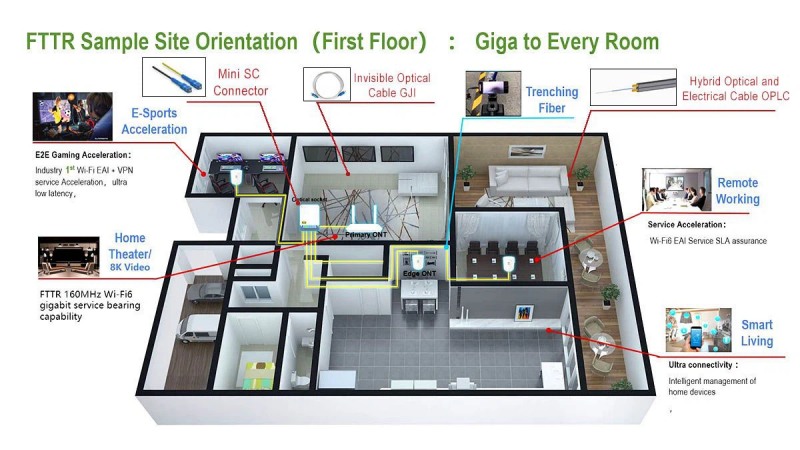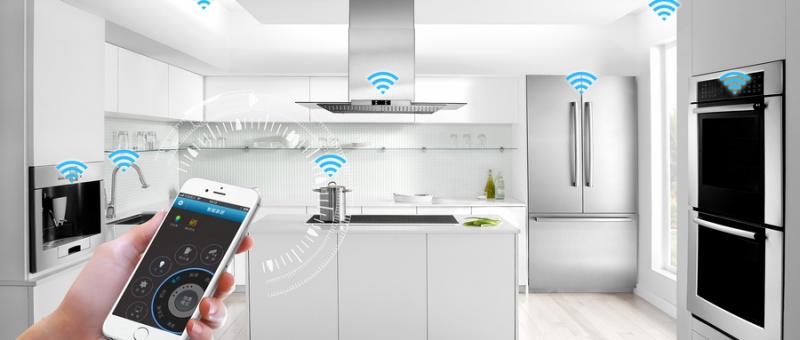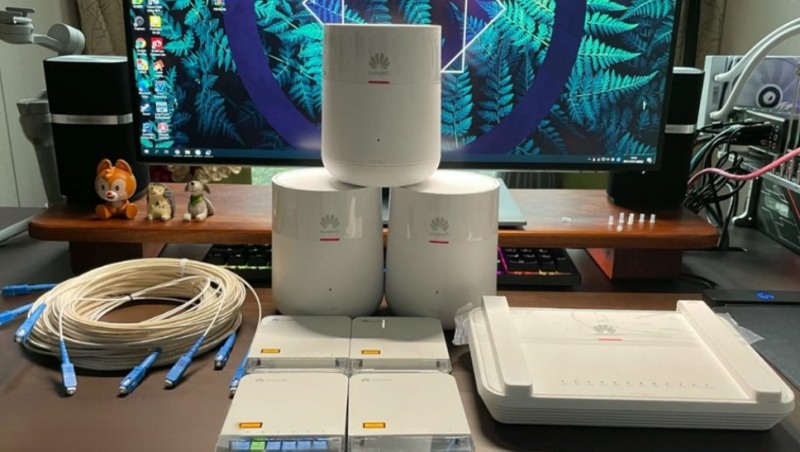FTTR Solutions: The Future of Home Networking
FTTR (Fiber to The Room) technology represents a revolutionary leap in home networking solutions, providing a full-fiber optic infrastructure within the home environment.
By deploying a central FTTR gateway in the distribution box or a strategic location, this technology uses a combination of splitters and bi-directional single-core fiber optics to create a robust and high-speed optical network.
This network connects an OLT (Optical Line Terminal) to multiple secondary optical routers, delivering gigabit Ethernet ports and Wi-Fi 6 capabilities straight to every room, ensuring full coverage of wired and wireless gigabit networks within the home.
Advantages of FTTR Solutions
FTTR technology provides an unparalleled advantage over traditional networking solutions by breaking free from the limitations of Ethernet port numbers and allowing for flexible network expansion.
Currently supporting up to 16 APs (Access Points), FTTR greatly expands the scope of Wi-Fi networking, replacing traditional cables with fiber optics to achieve whole-home fiber networking.

FTTR solutions come with four key components:
- Central Gateway: Sits between the OLT and optical routers, connecting upstream to the OLT via XG(S)-PON or 10G EPON and offering downstream interfaces for optical routers.
- Optical Routers: Strategically placed in each room, these devices connect upstream to the central gateway via indoor fiber optics and provide Wi-Fi and GE port access for internet connectivity to various end devices.
- Optical Network: Composed of optical cables and splitters, it forms the backbone of the home’s internal network.
- Network Management Platform: Manages and collects data from the home network, facilitating comprehensive operational and maintenance management.
FTTR Applications
Beyond supporting high-bandwidth applications such as 4K/8K UHD video, cloud VR, online education, teleworking and live streaming.
FTTR technology is conducive to innovative applications like Wi-Fi sensing.
Wi-Fi sensing utilizes the propagation characteristics of electromagnetic waves to analyze the dynamic environment within a space, detecting changes in the environment and triggering alerts for activities like home security and fall detection.
FTTR solutions offer:
- A seamless whole-home network experience.
- Greater network reliability and performance.
- Enhanced user privacy, as Wi-Fi sensing does not directly capture images or videos.

FTTR vs. Traditional Networking
When compared to traditional networking technologies, FTTR stands out in terms of performance, scalability, reliability, and controllability.
By using a network management platform, FTTR enhances a user's ability to self-maintain and troubleshoot their home network.
The mature optical communication industry chain strongly supports FTTR technology, allowing for iterative upgrades over existing home network infrastructures.
Summary
The commercial scaling of FTTR technology unlocks the full potential of wired networking, providing a faster, higher quality, and more reliable information access channel for both living and working environments.

As the inevitable direction for gigabit home networking and an opportunity for service providers to innovate, FTTR solutions demonstrate the future of home connectivity.
For those seeking an FTTR solution to upgrade their home network infrastructure, Fibeye is your partner in embracing this cutting-edge technology.
Contact Fibeye for more information on implementing an FTTR solution tailored to your needs.

